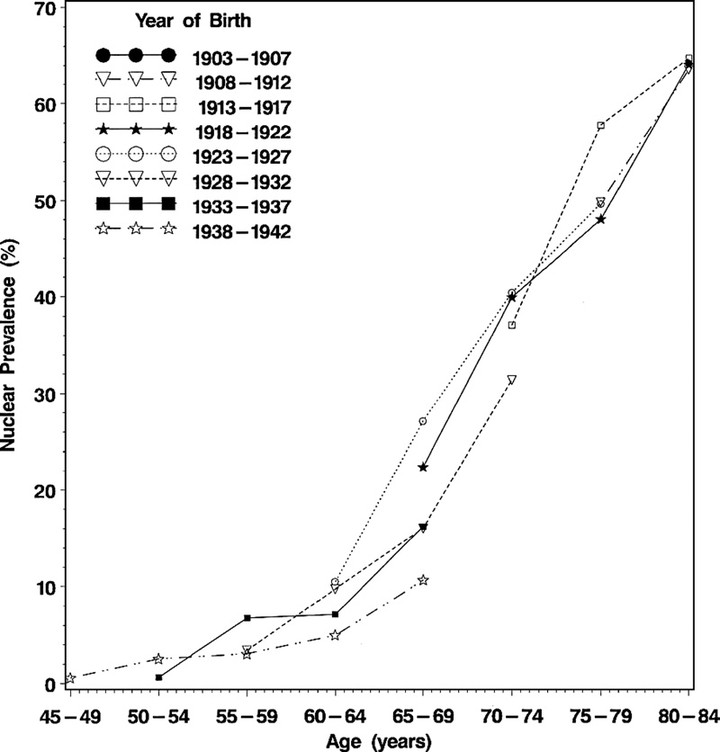
Abstract
OBJECTIVE: To describe the long-term incidence of nuclear cataract, cortical cataract, and posterior subcapsular cataract (PSC) and to evaluate age and cohort effects on these rates. DESIGN: Population-based study. PARTICIPANTS: Members of the Beaver Dam Eye Study cohort. METHODS: Subjects were seen in study offices for examinations (slit lamp, checking for occludable angles, dilation of pupils, lens photographs, measurement of blood pressures, and study interview). MAIN OUTCOME MEASURES: Lens photographs were taken with specially modified cameras that have been maintained over the course of all study examinations. Photographs were graded according to standard protocols that have been continued throughout all the examinations. RESULTS: Cumulative incidence of nuclear cataract was 29.7% (95% confidence interval [CI], 28.0-31.4); cortical cataract, 22.9% (95% CI, 21.3-24.5); PSC, 8.4% (95% CI, 7.4-9.4); and cataract surgery, 17.7% (95% CI, 16.4-19.0). The cumulative incidence increased with age and was greater for women after accounting for competing events. The relationship between age and incidence of cataracts was quadratic for nuclear cataract, cubic for cortical cataract, and linear for PSC. For persons with similar ages at time of examination, those in more recent birth cohorts were less likely to have any type of prevalent cataract; the effect was significant for nuclear cataract and for cataract surgery, and the effect persisted after controlling for relevant confounders. There were apparent cohort effects on cataract incidence. CONCLUSIONS: Age-adjusted incidence of all cataract types increased with increasing age, although the age effect was not linear for all 3 types. More recent birth cohorts are relatively protected relative to persons born earlier. Further follow-up is needed to verify the trends we report here and to determine whether cohort effects on 10-year incidence are significant.